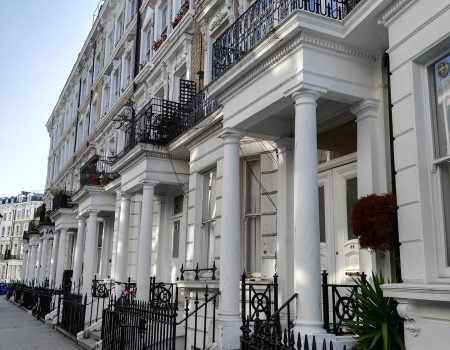Prime property prices in London fell again in the second quarter of this year but there are signs that this sector of the capital’s housing market is reaching bottom, the latest analysis shows.
Prices in the highest value sector in central London fell by an average of 0.9% in the second quarter and are now some 17.6% below their peak of 2014, according to the research from real estate firm Savills.
However, there is an improvement with the annual fall reaching 3.8% in the 12 months to the end of June 2018, less than the 4.2% fall recorded at the end of the first quarter.
The analysis report points out that values have fallen across the prime property market in London following stamp duty change in late 2014 and were further affected by the decision to leave the European Union.
The firms says that there are early indications that the market for the very best properties is bottoming out, although the average conceals huge variation in performance across the index.
The top performing 10% of prime central London properties by price growth have seen prices hold their own in the past year with a rise of 0.2%, and at just 1.5% down are all but back to peak 2014 values.
By contrast the weakest 10% of prime homes have lost almost a third, some 32%, of their value in the same period after falling a further 7.7% in the last 12 months.
‘It is very difficult to generalise about the factors behind this enormous range. Rather, performance has been very much property specific. Some of it is down to the size of the property, though that’s not universally the case, some down to condition and some simply down to what is currently fashionable,’ said Lucian Cook, head of UK residential research at Savills.
‘Location currently appears very much a secondary indicator of performance. The exception is Marylebone, which stands out as the most robust local market by a wide margin,’ he added.
Indeed, average values in this prime central London location have fallen just 2.6% in the last year and are down 6.4% since the 2014 peak, significantly outperforming the prime central London average.
More generally, properties in immaculate condition have fallen an average 14.5% since the peak, while those in poor condition are down 20.6%. The report says that agents report a reluctance amongst buyers to take on a refurbishment project with all the budget risks that can entail.
The research also show that Georgian properties are down 15.6% whereas Edwardian properties are down 23.3%. Meanwhile homes built between 2010 and 2015 have seen values fall by a total of 11.5% on average since the middle 2014, faring much better than those built in the preceding 10 years, which are down 17.4%, as tastes and expectations of specification have changed.
In the outer prime London market, size and price matter more with prices down 0.9% in the last quarter and 4.1% in the last year. The report points out that prices in this sector have generally stood up better than in more central locations in the immediate wake of the stamp duty changes of 2014 and they are only 7.3% below peak.
However, the extremes are also marked in these outer London markets. The top performing properties have seen price growth of 9.9% since 2014, despite falls of 2.4% in the past year and a fall of 8.9% in the last two years. At the other extreme, the weakest section of this market is down of 23.7% since the peak, creating a 33.6% point gap between top and bottom of the market.
In areas such as Fulham, Clapham and Islington, smaller less expensive prime properties have performed better than the very largest, most expensive homes. Those under 1,000 square feet are priced just 3% below 2014 levels, while those over 6,000 square feet are down 18%. In contrast to central London, other factors such as the condition of the property have been less of a differentiator.
‘The outer prime London markets are traditionally needs-based and depend heavily on wealth generated in the capital. Many buyers require borrowing, so will have an eye on interest rate indicators, and are more susceptible to concerns regarding Brexit that have impacted more universally of late,’ said Cook.
‘Stamp duty is also much more of a factor for the most expensive homes, meaning buyers in that upper market segment will only commit when they believe they are getting good value,’ he added Article from propertywire






